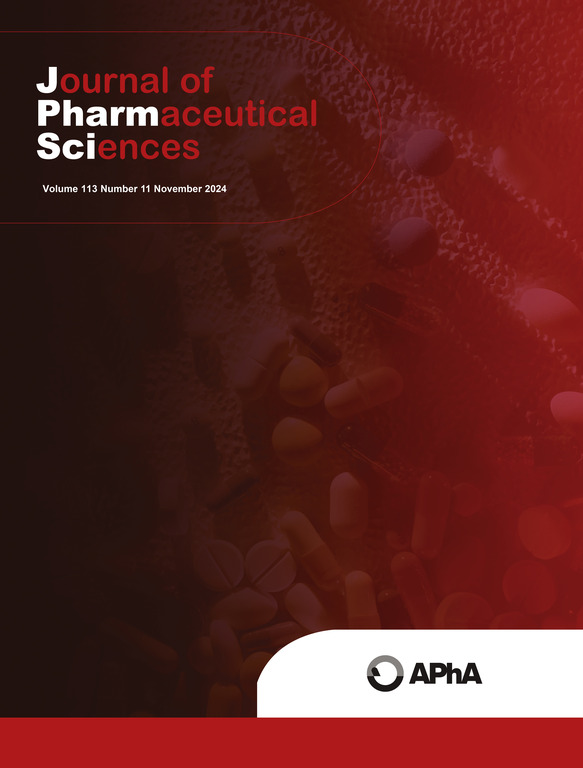Dissolution of copovidone-based amorphous solid dispersions: Influence of atomic layer coating, hydration kinetics, and formulation
IF 3.7
3区 医学
Q2 CHEMISTRY, MEDICINAL
引用次数: 0
Abstract
Atomic layer coating (ALC) is an emerging, solvent-free technique to coat amorphous solid dispersion (ASD) particles with a nanolayer ceramic coating that has been shown to improve powder characteristics and limit drug crystallization. Herein, we evaluate the impact of aluminum oxide coatings with varying thickness and conformality on the release behavior of ritonavir/copovidone ASDs. Release performance of powders, neat tablets, and formulated tablets was studied. Confocal fluorescence microscopy (CFM) was used to visualize particle hydration and phase separation during immersion of the ASD in aqueous media. CFM revealed particle hydration requires defects for solvent penetration, but coatings, regardless of thickness, had minor impacts on powder dissolution provided defects were present. In tablets where less surface area is exposed to the dissolution media due to gel formation, slowed hydration kinetics resulted in phase separation of the drug from the polymer in coated samples, limiting release. Formulation with two superdisintegrants, crospovidone and croscarmellose sodium, as well as lactose achieved ∼90% release in less than 10 minutes, matching the uncoated ASD particles of the same formulation. This study highlights the importance of hydration rate, as well as the utility of confocal fluorescence microscopy to provide insight into release and phase behavior of ASDs.

基于 Copovidone 的无定形固体分散体的溶解:原子层涂层、水合动力学和配方的影响
原子层包衣(ALC)是一种新兴的无溶剂技术,可在无定形固体分散体(ASD)颗粒上包覆一层纳米陶瓷涂层,该涂层已被证明可改善粉末特性并限制药物结晶。在此,我们评估了不同厚度和保形性的氧化铝涂层对利托那韦/科波维酮 ASD 溶解的影响。研究了粉末、纯片和配制片剂的释放性能。共聚焦荧光显微镜(CFM)用于观察 ASD 在水介质中浸泡期间的颗粒水合和相分离。共聚焦荧光显微镜显示,颗粒水合需要有缺陷才能使溶剂渗透,但只要存在缺陷,无论涂层厚度如何,对粉末溶解的影响都很小。在片剂中,由于凝胶的形成,暴露在溶解介质中的表面积较小,水合动力学的减慢导致涂层样品中的药物与聚合物相分离,从而限制了药物的释放。含有两种超微崩解剂(曲丙维酮和roscarmellose sodium)以及乳糖的制剂在不到 10 分钟的时间内达到了 90% 的释放率,与相同制剂中未包衣的 ASD 颗粒相当。这项研究强调了水合速率的重要性,以及共聚焦荧光显微镜在深入了解 ASD 的释放和相行为方面的实用性。
本文章由计算机程序翻译,如有差异,请以英文原文为准。
求助全文
约1分钟内获得全文
求助全文
来源期刊
CiteScore
7.30
自引率
13.20%
发文量
367
审稿时长
33 days
期刊介绍:
The Journal of Pharmaceutical Sciences will publish original research papers, original research notes, invited topical reviews (including Minireviews), and editorial commentary and news. The area of focus shall be concepts in basic pharmaceutical science and such topics as chemical processing of pharmaceuticals, including crystallization, lyophilization, chemical stability of drugs, pharmacokinetics, biopharmaceutics, pharmacodynamics, pro-drug developments, metabolic disposition of bioactive agents, dosage form design, protein-peptide chemistry and biotechnology specifically as these relate to pharmaceutical technology, and targeted drug delivery.

 求助内容:
求助内容: 应助结果提醒方式:
应助结果提醒方式:


